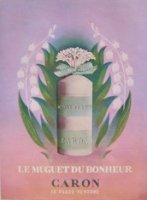

Farnesiana was one of the first modern fragrances inspired by the mimosa flower, that notoriously difficult-to-replicate fluffy yellow bloom. According to Jean-Marie Martin-Hattemberg’s volume on Caron, Farnesiana was created by perfumer Michel Morsetti in 1947; its composition includes notes of mimosa, black currant, bergamot, jasmine, violet, lily of the valley, lilac, vanilla, sandalwood, opopanax, hay, and musk (although the Caron website currently only lists mimosa, sandalwood, and hay). The name “Farnesiana” refers to acacia farnesiana, the botanical name for a particular variety of mimosa; it is also, Caron suggests, evocative of Rome’s grand Farnese Palace.
That juxtaposition of a simple flower and a Renaissance palazzo seems appropriate to me, since I’ve always considered Farnesiana a sophisticated comfort scent, an unusual floral-gourmand (or “fleurmand,” as I like to call this perfume sub-genre). To my nose, Farnesiana begins with a powdery, pollen-like mimosa note and with accords of sun-warmed hay and grass. Oddly enough, this green-tinged phase reminds me of certain fragrances from Santa Maria Novella, like Ginestra (Broom) or Fieno (Hay), that evoke meadow-like landscapes. Farnesiana’s heart opens up to reveal the sweetly resinous opoponax…
